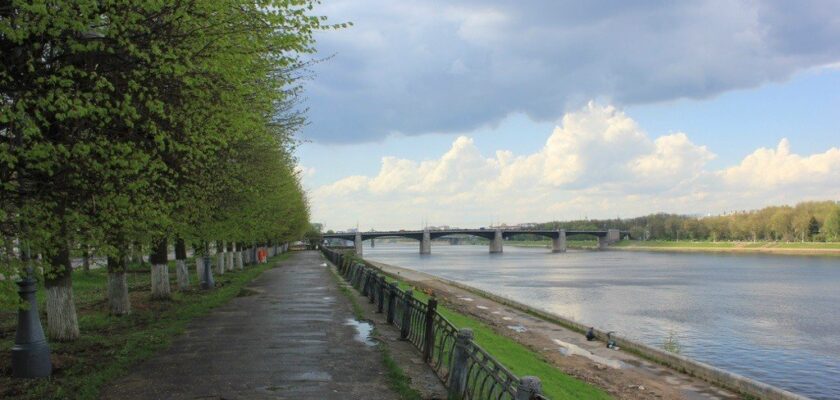Stepan Razin Embankment
Stepan Razin Embankment is a picturesque street running along the right bank of the Volga River in the center of Tver. It stretches for more than 2 kilometers – from the old City Garden to the stadium “Yunost”. The beautiful embankment is considered one of the city’s visiting cards and a valuable urban monument. Along the bank of the Volga River there are many buildings of the XVIII century, built “solid facade” (wall to wall), mansions of the XIX century and buildings erected in the 1930’s.
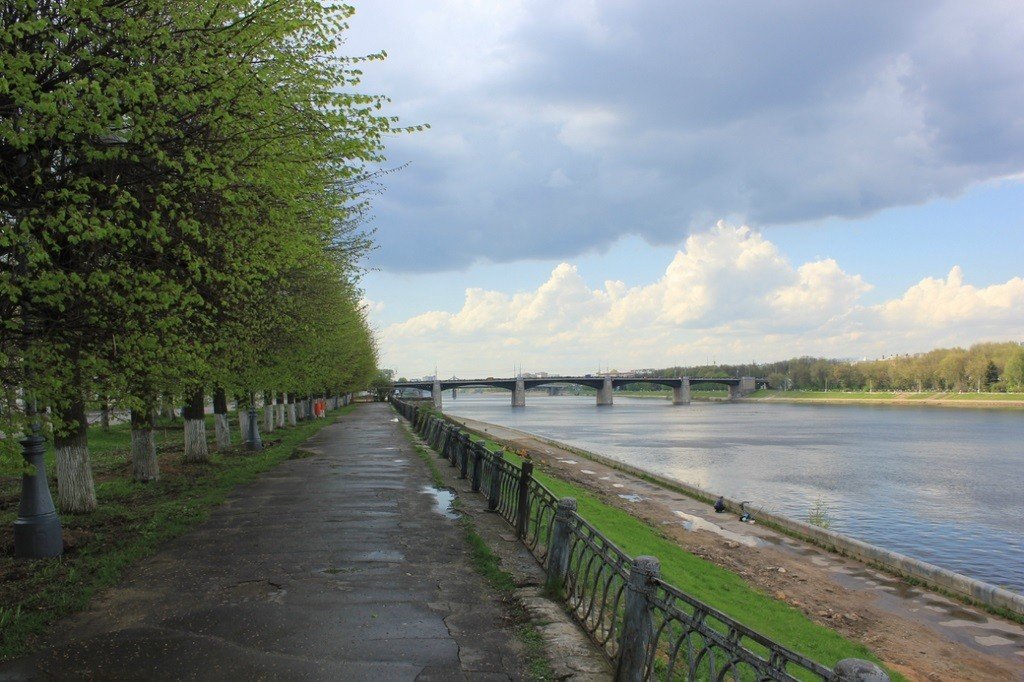
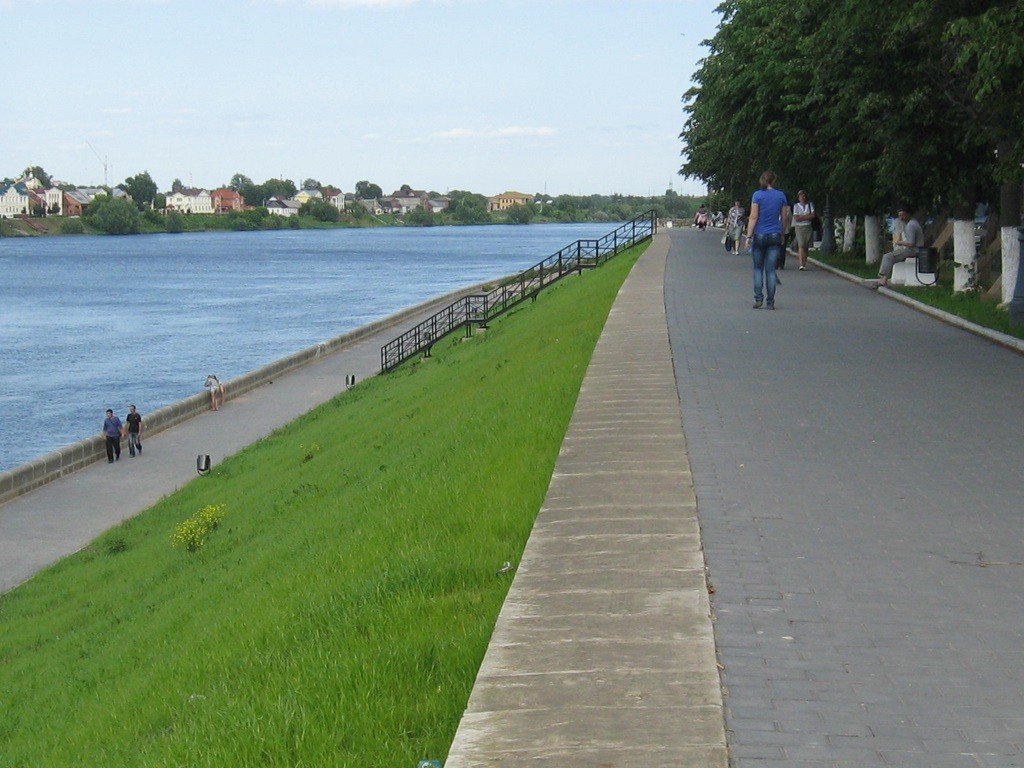
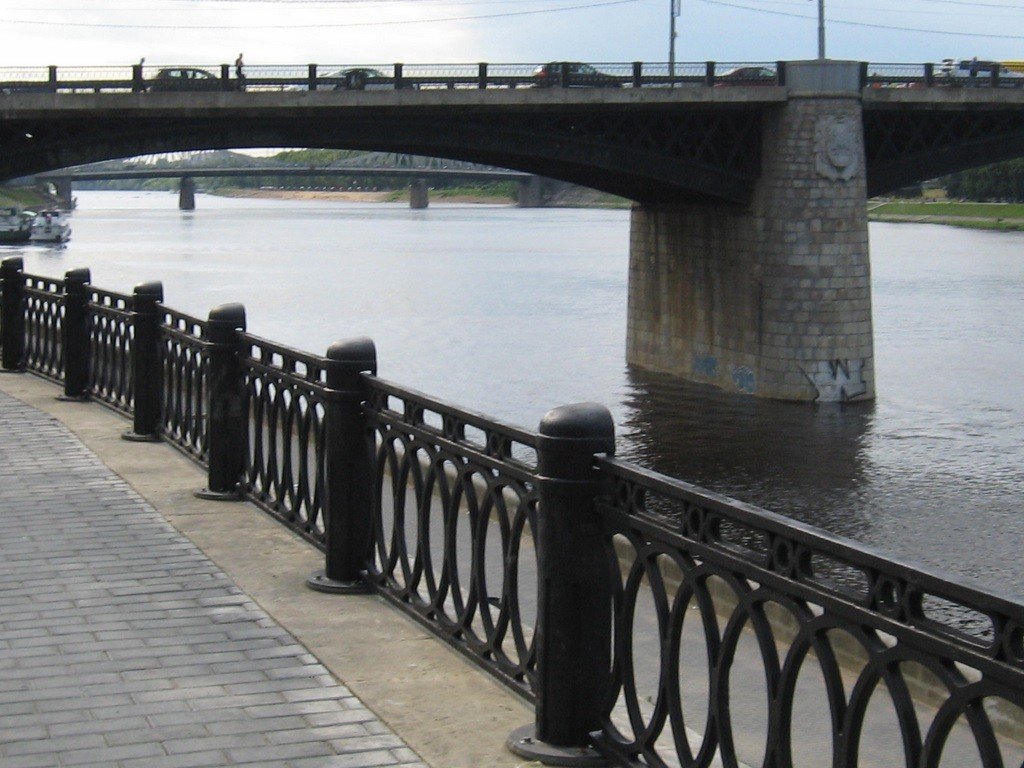
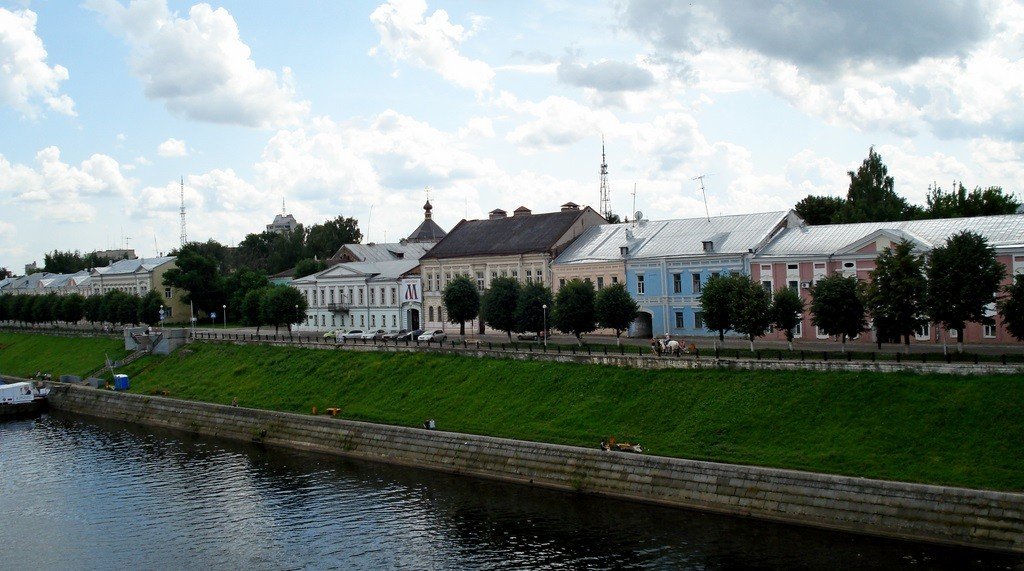
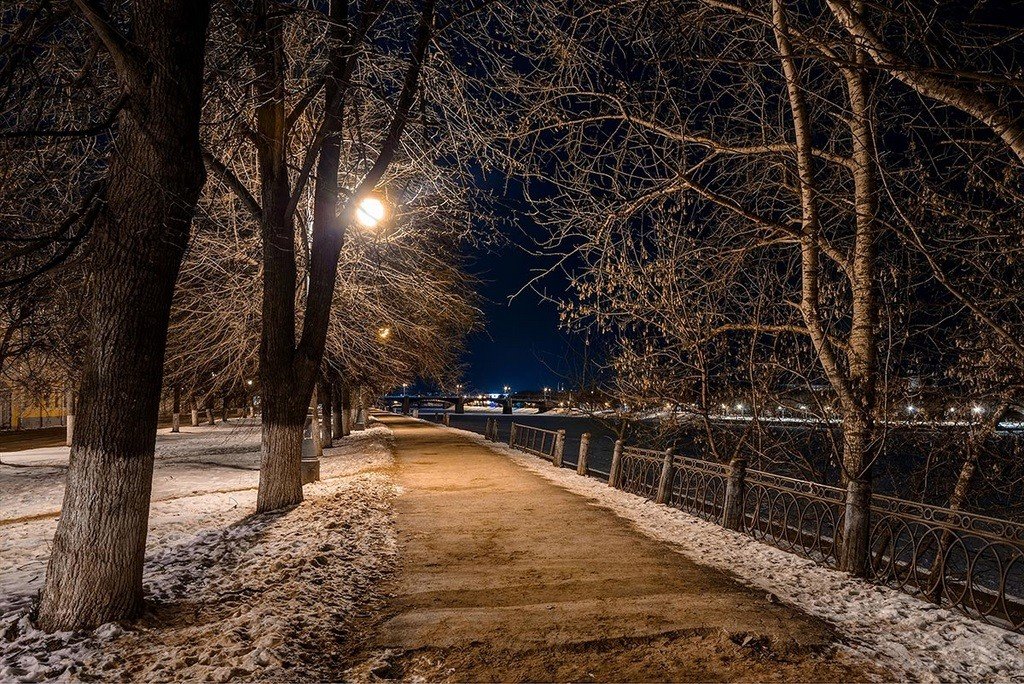
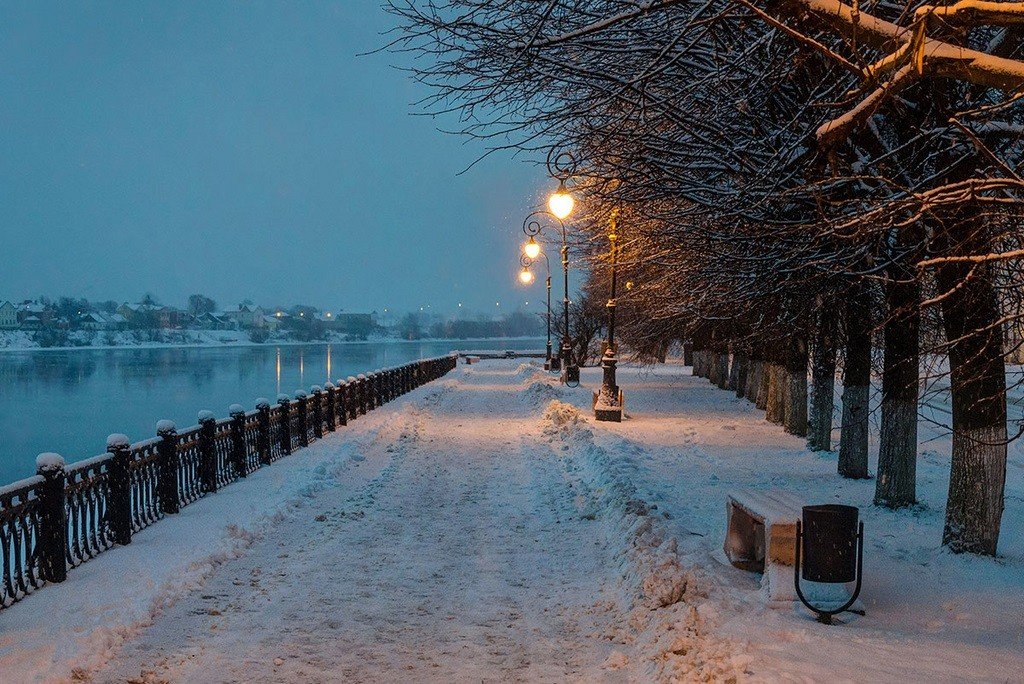
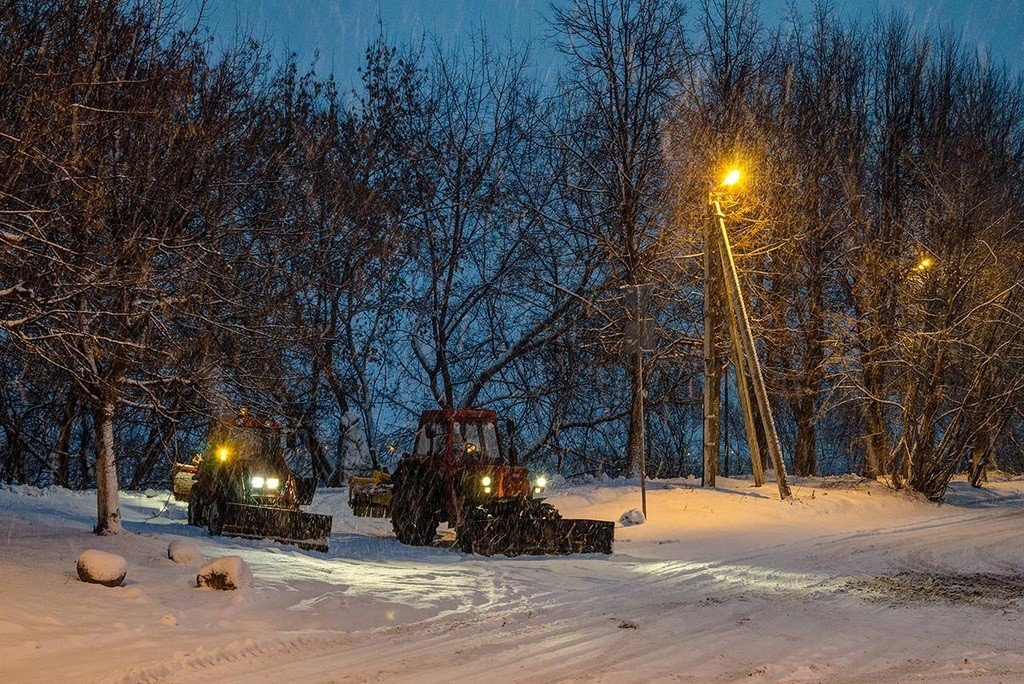
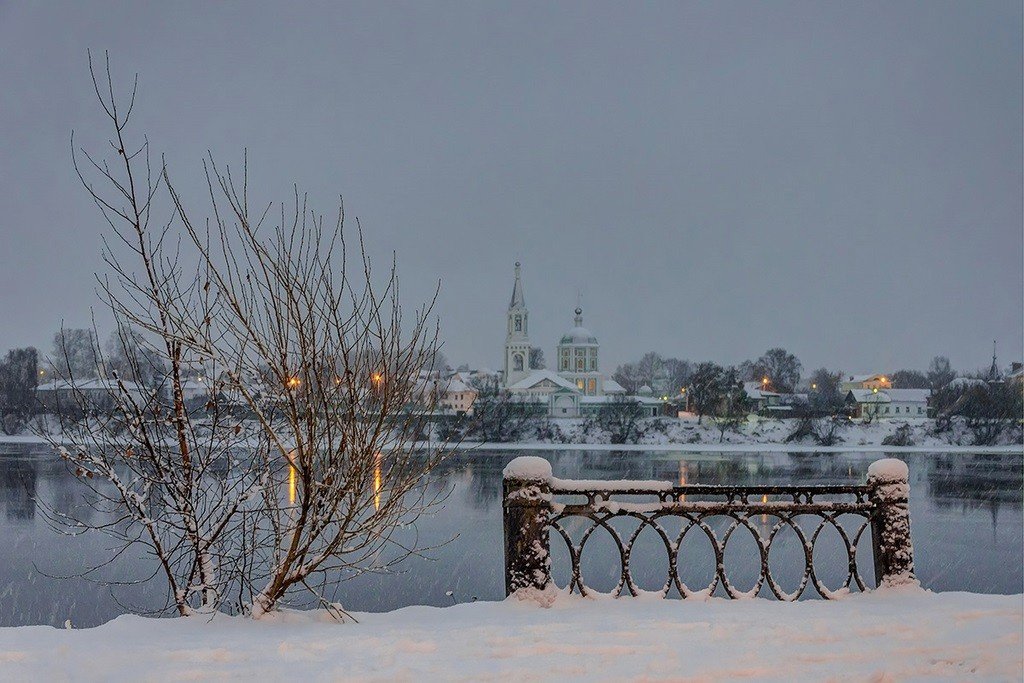
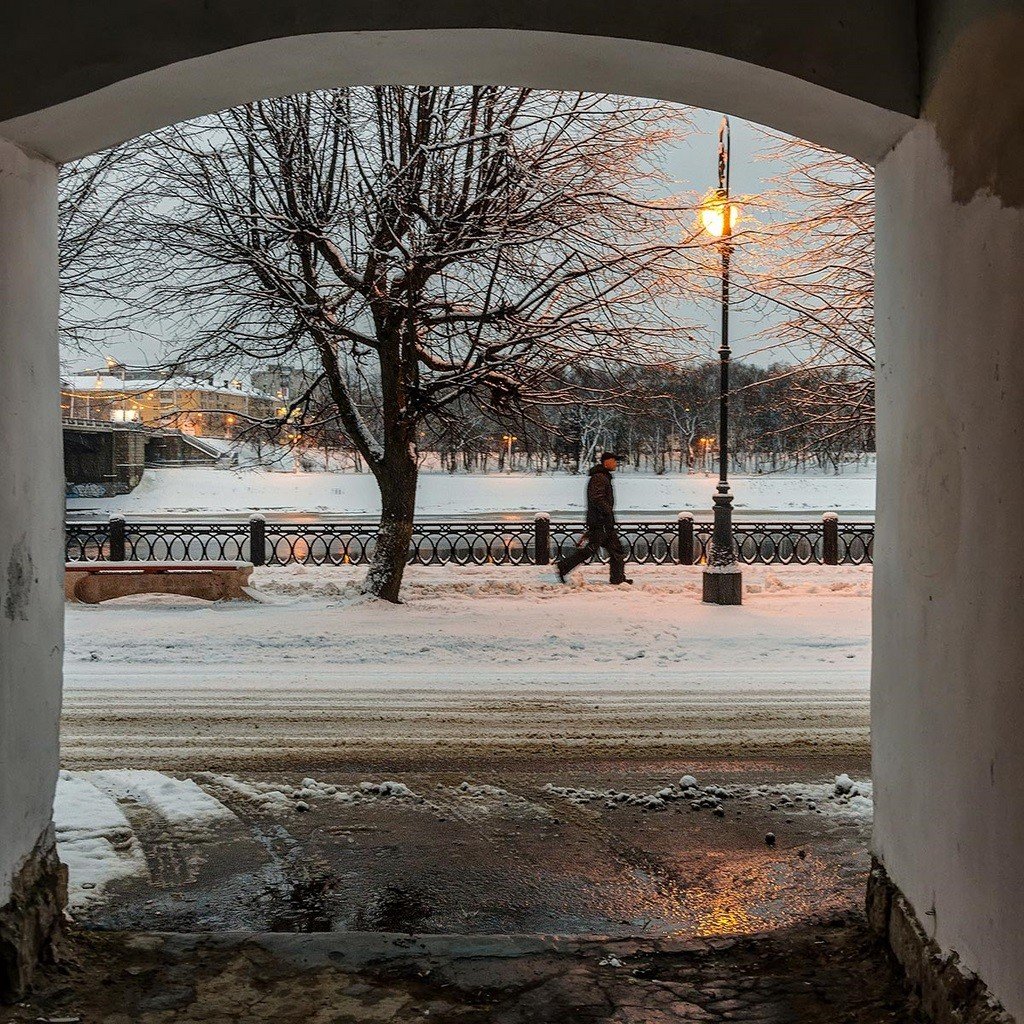
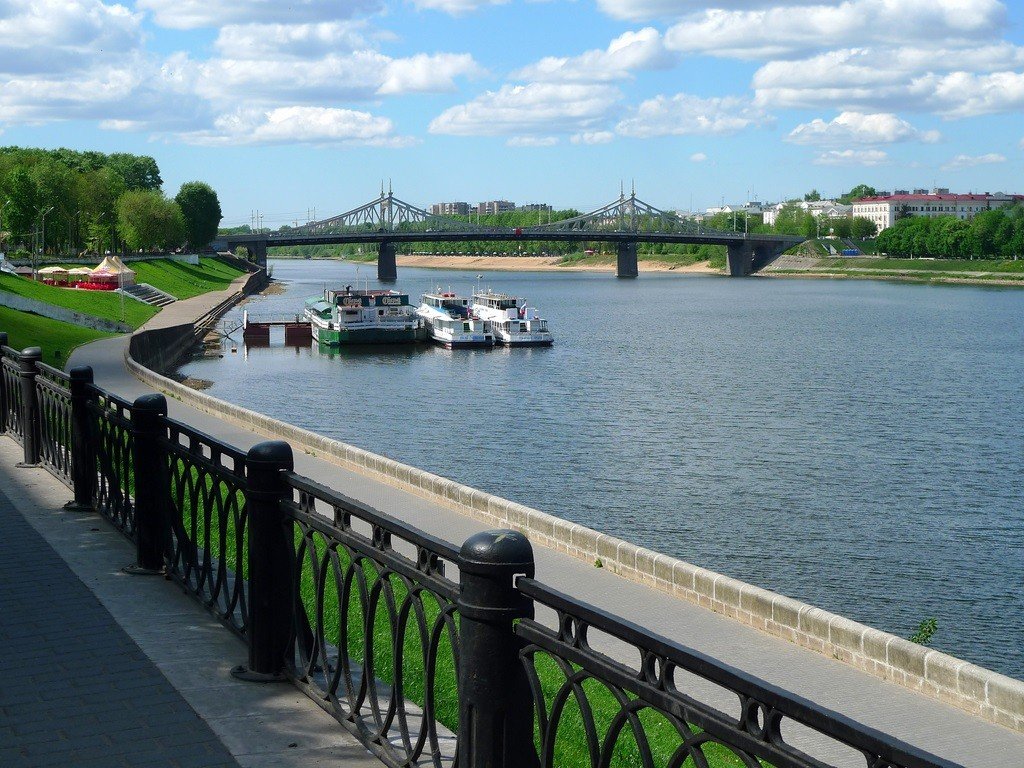
- Highlights
- History of the building
- What you can see at the beginning of the embankment
- Old mansions
- How to get there
Highlights
People come to the embankment to walk in the shade of trees and admire the Volga. The lower walkway is laid near the granite parapet, and the upper one is located above the green slope, behind an openwork metal fence. From here you have a beautiful view of the opposite bank of the river – the green Zavolzhsky Park, the monument to Afanasy Nikitin, the mouth of the Tvertsa, the picturesque building of the River Station and the domes of St. Catherine’s Monastery.
.Unfortunately, these days the street on the right bank of the Volga is not in the best condition. Most of the old buildings need restoration, dilapidated facades, walkways and metal fences need repair. However, despite this, the embankment of Stepan Razin remains one of the most favorite places for residents of Tver and tourists coming to this city.
.History of building
The first stone houses along the Volga River began to appear after a big fire in 1763. The design of the new embankment was made by architect Pyotr Romanovich Nikitin, who was the author of master plans for streets, buildings and wayfarers’ palaces in many Russian cities. In Tver they tried to copy the urban planning trends of St. Petersburg, so Nikitin began to erect houses close together – so that they formed a continuous facade.
.
Such a development did not please all the residents of the city. Local merchants opposed the infringement of personal space, so the construction of the “solid facade” was stopped. Adjoining buildings occupied only part of the embankment, and the remaining mansions were built in the traditional manor style, separating them with small alleys and green gardens. Until the end of the XVIII century, many houses near the river were one-story, and only later they were added second floors.
.
In the mid-1930s, the city was forced to protect the Stepan Razin embankment from being washed away by the river. As a result of the construction of a hydroelectric power plant in Dubna, the water level in the river rose, and part of the city streets could be flooded. To solve the problem, a strong stone parapet was built along the bank.
.What you can see at the beginning of the embankment
Where the Zvezda movie theater now stands, in the early 18th century there was a house where Emperor Peter the Great stayed. The intricate building of the movie theater was built in the 1930s in the traditions of constructivism and Soviet neoclassicism. The facade of the architectural monument faces the river. It is bounded on both sides by two towers with colonnades, which make the building look like a huge pair of binoculars. Today it houses two modern movie halls and a cafe.
.250 m east of the cinema rises a five-story structure with columns – the House of Voroshilov Riflemen or the House of Red Commanders. The massive building appeared on the Stepan Razin embankment in 1935 and was used to house the headquarters of the military district. Now it serves as a hotel and a dormitory where students of the Military Academy live.
.Old Mansions
After the Novovolzhsky Bridge, the character of Stepan Razin’s embankment changes dramatically. Once here, tourists feel as if they are going back a couple of centuries. Along the street begins a succession of two-story mansions built wall to wall, and some of them are decorated with beautiful wrought iron balconies.
.
The sections of the embankment between houses No. 6-10 and No. 11-16 were built in the second half of the 18th century according to the project of architect P. R. Nikitin. In order to be able to enter the courtyards, neat, elegantly decorated arches were made in the long buildings. In the area between Volodarskogo and Saltykova-Shchedrin Streets there are no more “solid facades”. Two-story buildings stand freely, as the Tver merchants wanted.
.On both sides of the intersection with Saltykova-Shchedrin Street is a complex of buildings that today house the buildings of the children’s hospital. Some of the old buildings have historical-architectural value, for example, house No. 22/39, where Khozinsky’s estate used to be. The project of the facade of the main mansion of this estate in 1811 was engaged by the famous architect Carl Ivanovich Rossi.
.How to get there
Stepan Razin Embankment stretches along the bank of the Volga River, 3 km north of the city railway station. The nearest public transportation stops are on Sovetskaya Street, 200 m from the embankment. There are buses No. 2, 3, 4, 5, 7, 15, 20, 21, 31, 41, 45 and 601 on Sovetskaya Street, as well as shuttle buses No. 12, 13, 51, 55, 207, 211, 226 and 233.
.